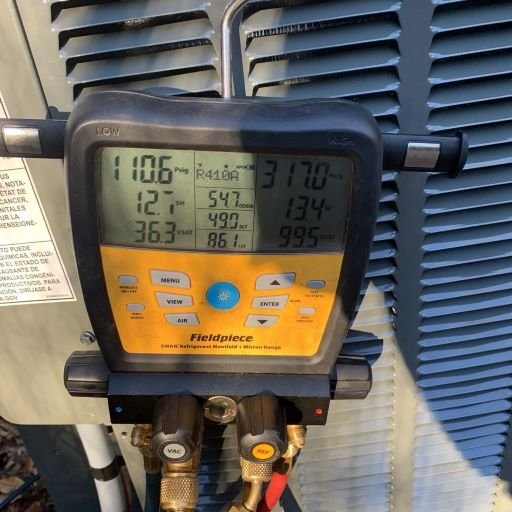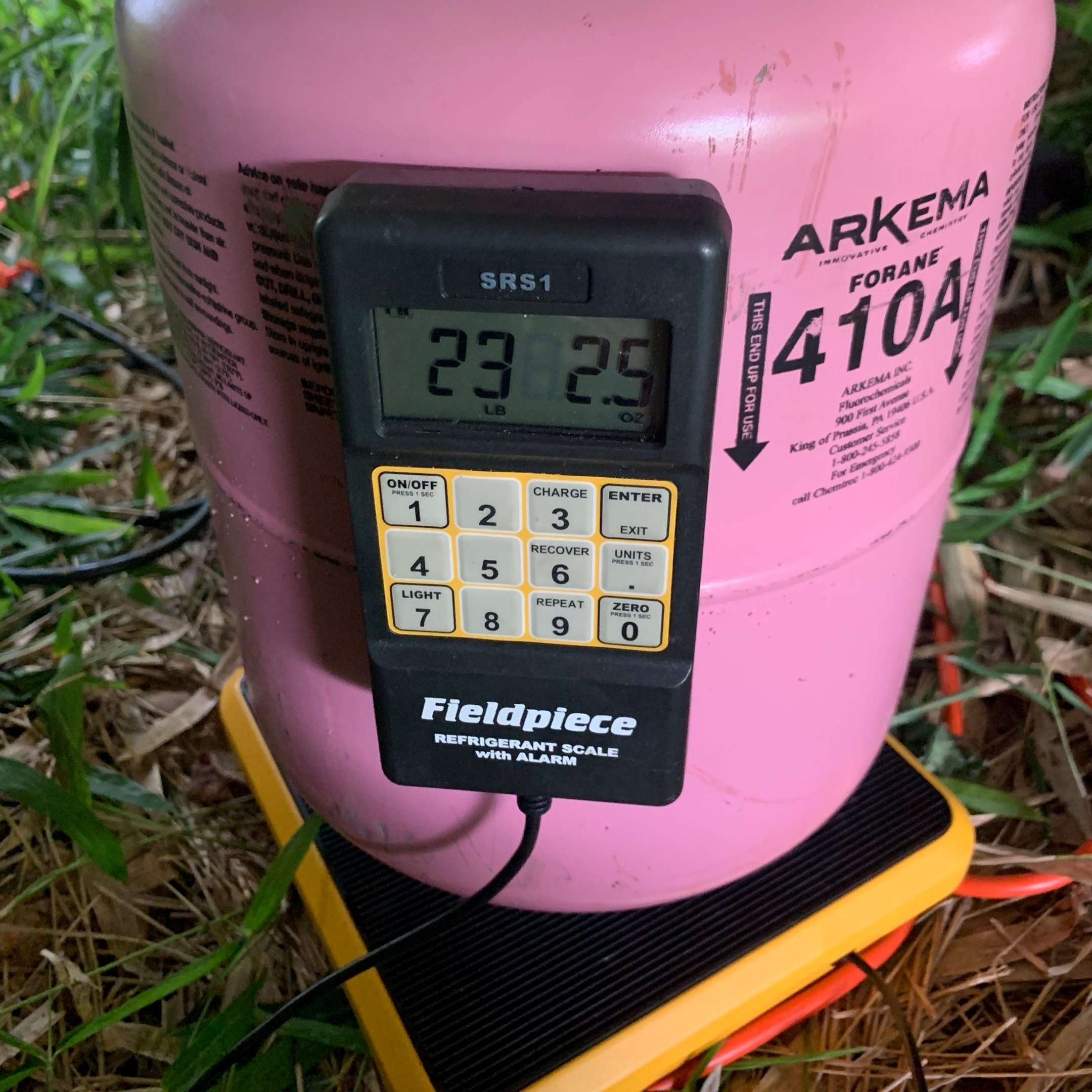Why Does Your Air Conditioner Need Refrigerant?
What happens once they stop producing it?
Refrigerant is a manufactured chemical compound that is inside all air conditioners. It is what is responsible for the cool air inside your home. Sometimes however your AC may not be working as well as it should, and you will need to have your refrigerant levels adjusted. This can happen for many reasons, when the unit is first installed it may need to have the refrigerant levels adjusted, if there has been a leak, or if the parameters of your system have changed. Whatever the reason, your local AC repair company should be fully equipped and capable of repairing the problems that you are facing.
What is refrigerant?
Refrigerant is a chemical compound that is capable of absorbing and releasing heat. Whenever it is paired with components like an evaporator coil, condenser coil, and compressor then it can create air conditioning. It is most often found in a liquid or gaseous state and is constantly switching back and forth while pulling the warm air from your home and replacing it with cool air. It is frequently called "Freon." Freon is a registered brand name. Not all refrigerant types fall into the Freon brand.
Handling Refrigerant
The handling, storage, and transportation of refrigerants are governed by several laws, regulations, and agencies. The principal goals of these are personal safety and protecting the environment. Understanding and operating within these rules and regulations is a critical aspect of an HVAC technician's job. All licensed technicians must pass a comprehension exam to demonstrate knowledge and familiarity with the regulations regarding handling refrigerants. They are charged with reducing refrigerant emissions through good service practices, leak detection, and proper recovery.
The Montreal Protocol
In 1985, the United Nations took up an effort to reduce ozone depletion, reduction of greenhouse gases, and the impact of global warming. They sponsored a treaty called the Vienna Convention for the Protection of the Ozone Layer. In 1987, target dates when ozone-depleting substances must be completely phased out were established and signed into effect by 29 countries. This is known as the Montreal Protocol and is now signed by more than 191 countries.
The Clean Air Act and Section 608
The Clean Air Act was revised in 1990. It has six major sections. The sixth governs Stratospheric Ozone Protection. Title IV has 18 sections. This legislation gives the Environmental Protection Agency (EPA) the authority to regulate ozone-depleting chemicals and the development of ozone-friendly refrigerants, including the ability to fine abusers up to $37,500 per incident per day.
Section 608 establishes the regulation for everything except motor vehicle air conditioners which is in 609. 608 provides regulations for residential air conditioning, commercial refrigeration, and transport refrigeration. Some of the regulations include:
Prohibition on venting refrigerant
Technician certification
Restrictions on the sale of refrigerant
Reclaimed refrigerant standards
Certification of recovery equipment
Refrigerant recovery levels
Repairing a refrigerant leak in equipment that holds a charge of 50 lbs or more.
Safe disposal
Recordkeeping
Knowingly venting refrigerant has been prohibited. These rules also apply to the release of HFC refrigerants, even though they are non-ozone-depleting. Four exceptions were made:
Released during good-faith attempts to recover refrigerant.
Refrigerants emitted during the normal operation of air conditioning and refrigeration systems.
Release of CFC and HFC that isn't refrigerant.
Small releases from connecting measuring equipment to air conditioners or other appliances.
Refrigerant Sales Restriction
In 1994, the sale of refrigerants in any size container was restricted to only licensed technicians. It also covers refrigerant-containing parts. It does not include fully assembled appliances or new equipment such as domestic refrigerators, window air conditioners, and packaged air conditioners. HFC refrigerant may also be sold to the public. Uncertified individuals may also purchase pre-charged split systems as long as all of the components are purchased at one time. However, they may not install these split systems. Connecting the refrigerant lines must be performed by a licensed technician.
How to know if you need refrigerant?
Low air conditioner refrigerant levels are symptomized by a lack of cold air blowing, coils freezing up, extended run times, or overall poor performance. An AC repair company will be able to use refrigerant gauges to connect to your condenser unit, check the pressures, and identify refrigerant leaks.
There are two copper lines that the refrigerant runs through connecting your evaporator coil to your condenser and compressor. Each of these lines has a valve to which the service tech will connect gauges. Next, they will monitor the pressures and temperatures while the unit is operating. There are two gauges, one for the high-pressure side or liquid line and one for the low-pressure side or suction line.
By monitoring these specific parameters within the refrigeration cycle, the service technician will be able to tell a lot of things about the system, low refrigerant levels, decreased airflow through the evaporator coil, or decreased airflow through the condenser coil. Checking the pressures, superheating, and subcooling are all things that a technician should do while inspecting a unit. This gives them a vast amount of insight into the health of your air conditioning system.
Which refrigerant do I need?
There are many kinds of refrigerants. The two most common refrigerants in home air conditioning systems are R-22 and R-410a. If you were ever around some of the older air conditioners you may have heard of r-12. It is unlikely for this to be found still in use for your home air conditioner or heat pump, but you can sometimes find an older refrigerator or car that uses this type of refrigerant.
R-22 is commonly seen in light green bottles and has been used almost exclusively for home air conditioning applications. R-22 will release chlorine into the atmosphere. As a result, this refrigerant is harmful to the environment and manufacturers have phased out production. There are still many homes that have air conditioners or heat pumps using this refrigerant. This has left many homeowners with difficult and sometimes expensive decisions to make. There are several replacement refrigerants available. The conversion to these other refrigerants can also be expensive. But they can serve as a possible alternative to replacing your AC unit until necessary. Air conditioners and heat pumps that contain R-22 can no longer be purchased.
The refrigerant that replaced r-22 is now the most common in air conditioners, it is R-410a. This can be found in pink bottles and does not contain the chlorine that makes r-22 dangerous to the environment. Nearly every heat pump or air conditioner manufactured in the last 16-17 years is R-410a. No matter which type of freon we are talking about, the EPA requires that anyone purchasing refrigerant have a valid EPA license. This will signify that you have taken a class and passed a test about the safety of handling refrigerant and the penalties for incorrectly handling it.
Due to the phase-out of production, R-22 has nearly become cost-prohibitive. Prices have soared to more than $1,000 for a 30 lb cylinder. These prices are expected to continue to rise and often surge during the summer months when demand is highest and supply is limited. Additionally, refrigeration system components that are specific to R-22 have gone up in price as their availability has gone down. A refrigerant repair on an older unit is no longer cost-effective.
How to add refrigerant?
Once the technician has connected their gauges and decided to add refrigerant to your system, they will need to get the bottle of refrigerant, a set of scales to weigh the bottle, and a temperature reading device. They will connect the bottle to a separate hose on their gauge manifold and turn the refrigerant bottle upside down on the scales. They will take an initial weight of the bottle before they add it and weight after to determine how much refrigerant was used.
The service technician will use the temperature reading device and the gauges to determine the superheat, which is the current temperature minus the boiling point. Superheat is the concept of heating the refrigerant vapor above its boiling point. This is accomplished in the evaporator coil where the refrigerant is boiled off to vapor from a liquid and draws heat. All the liquid must be boiled off during the heat transfer, any liquid reaching the compressor can cause damage.
Subcooling is the current temperature minus the boiling point. This is how the technician will be able to measure if the refrigerant has been condensed to a liquid before reaching the metering device. This is how the refrigerant can transfer heat from the inside of your home that's at a low temperature to the outside that's at a higher temperature. Both the superheating and subcooling are vitally important pieces of information for the service technician to be able to properly adjust the levels of refrigerant in your system.
What if your system is overcharged?
One of the most common problems people experience when it comes to refrigerants is not having enough in the system. What if it is too much, and your air conditioner is overcharged? This can be even worse than being undercharged. Having too much refrigerant in your system can cause the pressures to climb higher than they should which can cause compressor failure, refrigerant leaks, expansion device failure, and more. Most modern condensers are equipped with a high-pressure sensor that will shut the system down if the pressure gets too high, but there are still plenty of opportunities for it to damage your air conditioner. Especially if it is not fixed somewhat soon and it continues to run in that fashion.
Final advice
Refrigerant is the lifeblood of your air conditioning system. It is responsible for the cool air that enters your home and pulls the warm air out of your home. Refrigerant can be a hazardous material to deal with and you will need to have an AC repair company adjust your levels. If you believe that your air conditioner is not working properly, then give your local AC repair company a call today and have them check your refrigerant levels.



